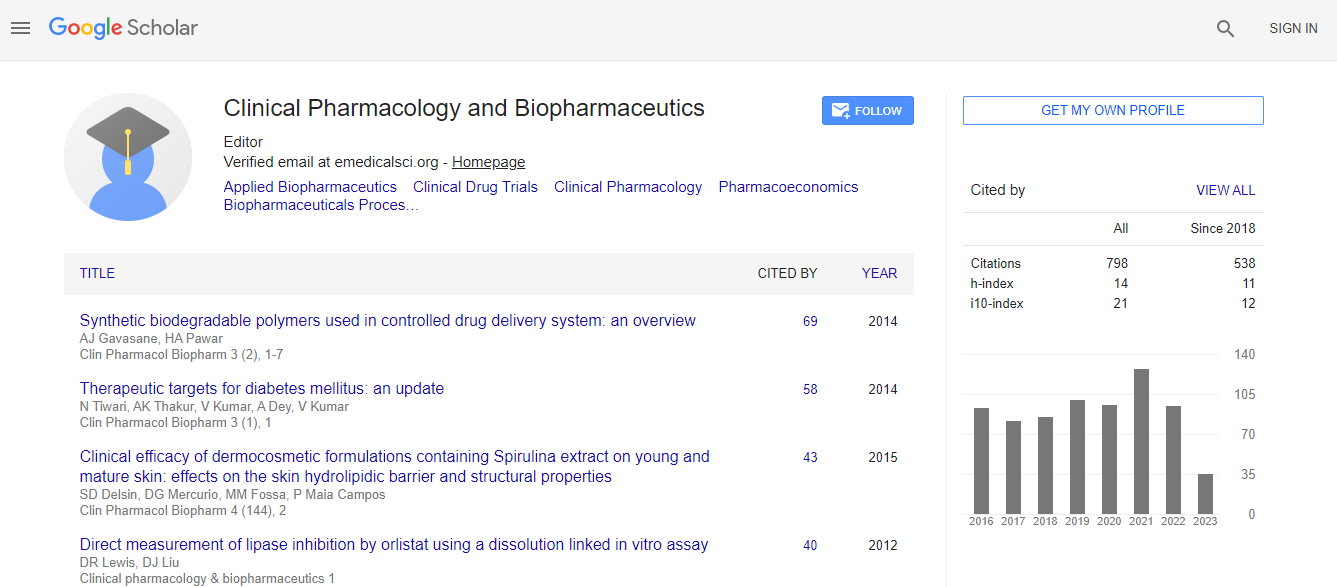Our Group organises 3000+ Global Conferenceseries Events every year across USA, Europe & Asia with support from 1000 more scientific Societies and Publishes 700+ Open Access Journals which contains over 50000 eminent personalities, reputed scientists as editorial board members.
Open Access Journals gaining more Readers and Citations
700 Journals and 15,000,000 Readers Each Journal is getting 25,000+ Readers
Google Scholar citation report
Citations : 1089
Clinical Pharmacology & Biopharmaceutics received 1089 citations as per Google Scholar report
Clinical Pharmacology & Biopharmaceutics peer review process verified at publons
Indexed In
- CAS Source Index (CASSI)
- Index Copernicus
- Google Scholar
- Sherpa Romeo
- Genamics JournalSeek
- RefSeek
- Hamdard University
- EBSCO A-Z
- OCLC- WorldCat
- Publons
- Euro Pub
- ICMJE
Useful Links
Recommended Journals
Related Subjects
Share This Page
Two cases of Candida parapsilosis corneal graft infection from a single eye center
3rd International Conference on Clinical Pharmacy
Hind Alkatan
King Saud University, Saudi Arabia
Posters-Accepted Abstracts: Clin Pharmacol Biopharm
Abstract
Fungal keratitis accounts for 6-53% of all cases of ulcerative keratitis in variable studies. The majority of cases are due to septate fungi. The abnormal cornea in cases of dry eye syndrome, chronic ulceration, erythema multiform and possibly HIV infection is infected more commonly with Candida. In a small series of spontaneous ulcerative keratitis in immuno-compromised patients 3 out of the 5 infected corneas were caused by Candida albicans. In regard to corneal graft infectious crystalline keratoplasty, several Candida species have been identified including Candida guilliermondii and parapsilosis. The most commonly isolated yeast in infections generally is Candida albicans. However, it seems that Candida parapsilosis is found with increasing frequency. Candida parapsilosis affects neonates and Intensive Care Unit (ICU) patients. In regard to the management, combination of surgery and antifungal drug is the usual therapeutic modality for most of eye fungal infections. In a previous study on mycotic keratitis, filamentous fungi were more commonly isolated than yeasts accounting for 71.3% (Aspergillus being the commonest followed by Fusarium) compared to 28.7% yeast infection most commonly by Candida species. In that study, 5 cases of Candida parapsilosis were identified. However, the infection was associated with other virulent pathogens in all these cases. We are presenting 2 successive cases of corneal graft infection by Candida parapsilosis originating from a single eye center within a short period of time to attract the attention of ophthalmologists and health workers to such an infection.Biography
Email: hindkatan@yahoo.com

 Spanish
Spanish  Chinese
Chinese  Russian
Russian  German
German  French
French  Japanese
Japanese  Portuguese
Portuguese  Hindi
Hindi 
